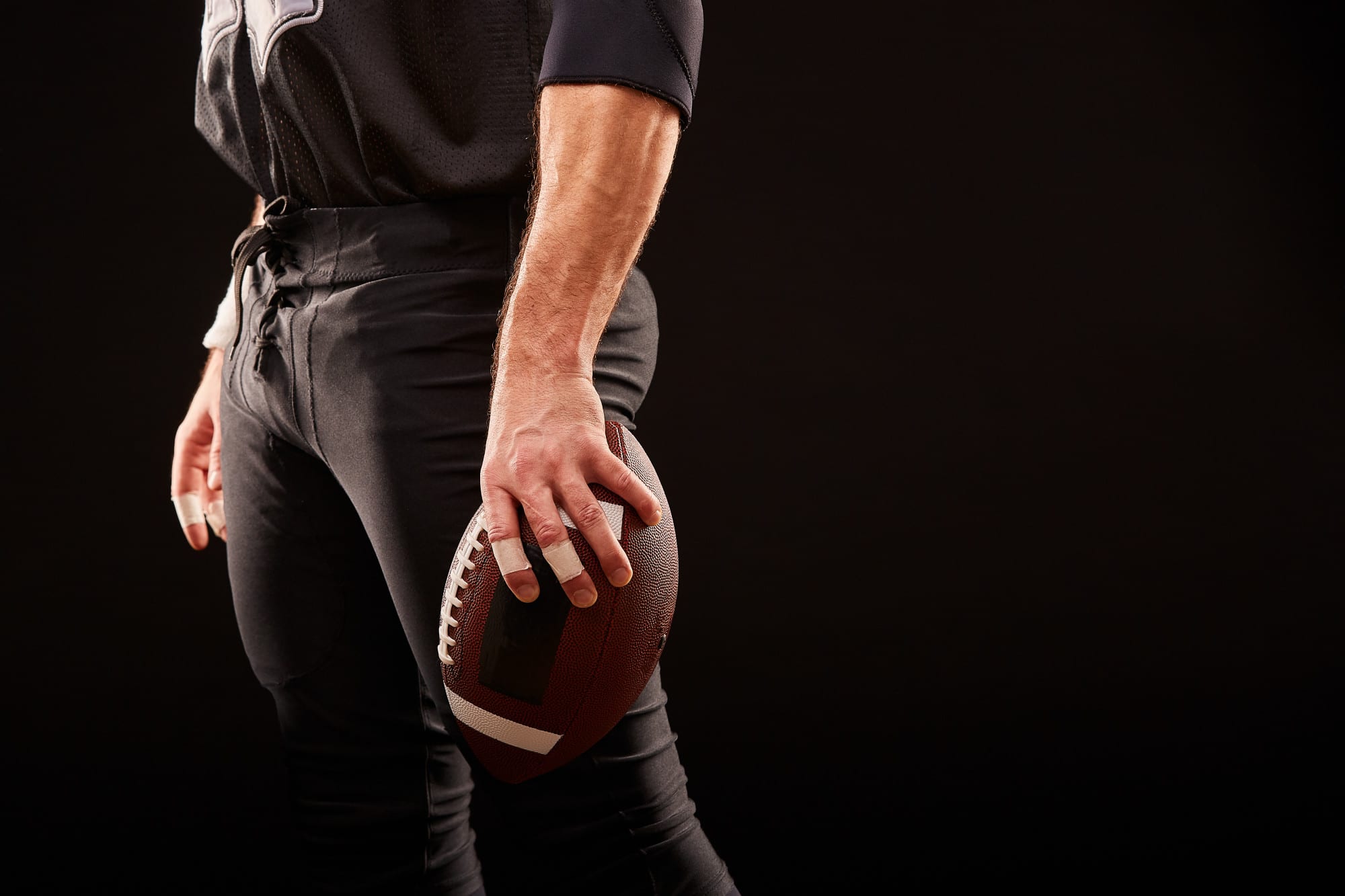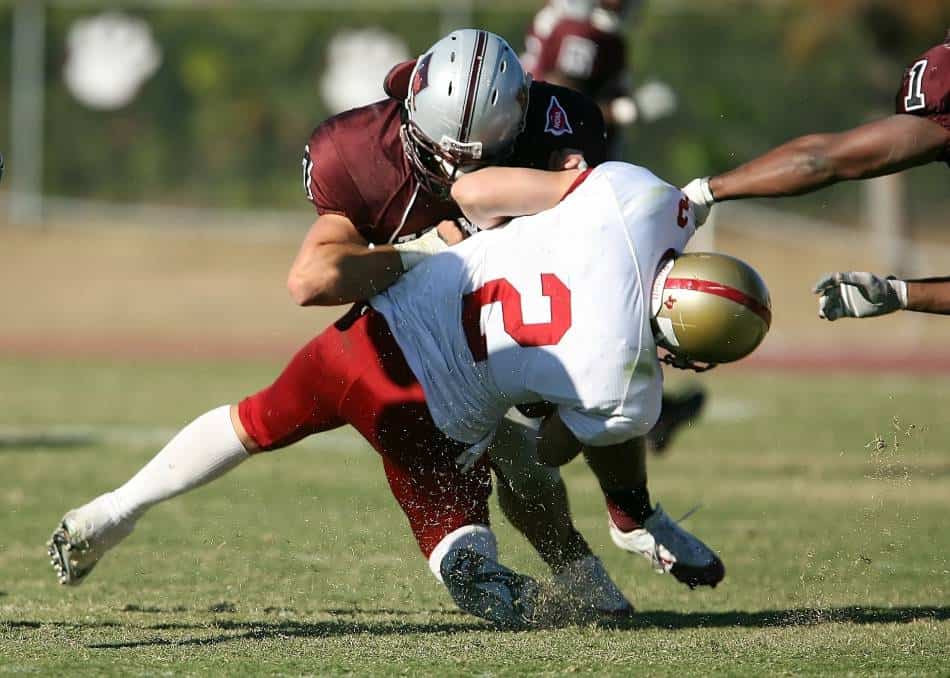I. Introduction

Football is a beloved and thrilling sport that captivates millions of fans worldwide. However, ensuring the safety of players is of paramount importance. In this article, we will explore the significance of safety in football and how safety measures have evolved over time to protect players from injuries.
A. Significance of safety in football
The well-being of players should always be the top priority in football. Safety measures are implemented to minimize the risk of serious injuries and create a playing environment where athletes can thrive and enjoy the game without undue harm.
B. The evolution of safety measures in the sport
Football has made significant strides in improving the safety of players over the years. From advancements in protective equipment to rules and regulations that prioritize player safety, the sport continues to evolve to provide a safer experience for all involved.
II. Protective Equipment and Gear
Protective equipment plays a vital role in reducing the risk of injuries, particularly in high-impact sports like football. In this section, we will focus on two key components of football gear: helmets and pads/body armor.
A. Helmets and facemasks
- Role in preventing head injuries
Helmets are designed to protect players from head injuries, including concussions. They absorb the impact of collisions and minimize the risk of skull fractures and brain trauma. The addition of facemasks provides further protection to the face and reduces the risk of facial injuries.
- Importance of proper fitting and maintenance
Properly fitted helmets are crucial for optimal protection. They should be securely fastened and conform to the player’s head shape. Regular maintenance, such as ensuring proper padding and replacing damaged or worn-out components, is essential to maintain the effectiveness of helmets.
B. Pads and body armor

- Impact absorption and protection from collisions
Pads and body armor, such as shoulder pads, hip pads, and knee pads, are designed to absorb and distribute the force of impacts. They provide essential protection to vulnerable areas of the body, reducing the risk of severe injuries like broken bones, sprains, and contusions.
- Advancements in material technology for enhanced safety
Advancements in material technology have allowed for the development of more lightweight and advanced padding systems. These materials provide efficient impact absorption while maintaining comfort and mobility for players.
III. Rules and Regulations
Football has implemented various rules and regulations aimed at ensuring the safety of players. In this section, we will explore two important aspects: concussion protocols and management, as well as targeting and excessive force penalties.
A. Concussion protocols and management
- Recognizing signs of concussions
Concussions are a prevalent concern in contact sports like football. Guidelines and protocols have been implemented to educate players, coaches, and medical staff about recognizing the signs and symptoms of concussions. Early detection and proper management are essential to prevent further injury and ensure a safe return to play.
- Return-to-play guidelines and rehabilitation
Return-to-play guidelines help ensure that players who have suffered concussions are fully recovered and medically cleared before resuming physical activity. Proper rehabilitation programs, overseen by trained medical professionals, are crucial to facilitate a safe and gradual return to play.
B. Targeting and excessive force penalties

To minimize high-risk hits, dangerous tackles, and excessive force, football has implemented penalties and harsh consequences for such actions. This shift encourages players to prioritize safety during gameplay and promotes the adoption of safer tackling techniques.
Protecting player safety is a collective responsibility. In the next section, we will discuss the importance of educating players and coaches on injury prevention techniques and promoting proper tackling skills.
IV. Injury Prevention and Training
Promoting injury prevention techniques and emphasizing proper training are key to ensuring player safety in football. In this section, we will examine the importance of preseason conditioning and strength training, as well as proper tackling and blocking techniques.
A. Preseason conditioning and strength training
- Building muscular strength and endurance
Preparing the body for the physical demands of football is crucial. Preseason conditioning programs focus on improving overall fitness, agility, and endurance while also incorporating exercises that enhance muscular strength to withstand collisions and reduce the risk of injury.
- Reducing the risk of musculoskeletal injuries
Strength training helps stabilize the body and build resistance to common football injuries such as sprains, strains, and tears. This training emphasizes strengthening muscles around vulnerable joints, improving flexibility, and developing proper body mechanics to minimize the risk of injury.
B. Proper tackling and blocking techniques

- Emphasizing form and control over aggression
Coaches play a vital role in teaching proper tackling and blocking techniques that prioritize player safety. Techniques that focus on proper form, control, and minimizing head-to-head contact are encouraged to reduce the risk of head and neck injuries.
- Coaches’ role in teaching safe techniques
Coaches should be well-informed about the latest safety guidelines and techniques endorsed by football organizations. They must ensure that players receive appropriate training and practice safe techniques during games, fostering a culture of safety throughout the team.
V. Medical Support and Player Safety
Providing adequate medical support and ensuring players’ safety is crucial in football. This section highlights the importance of certified athletic trainers and medical staff, as well as player education and awareness.
A. Certified athletic trainers and medical staff
- Their role in injury prevention, assessment, and treatment
The presence of certified athletic trainers and qualified medical staff on the sidelines is essential in promoting player safety. These professionals are adept at recognizing and assessing injuries promptly, providing appropriate on-field treatment, and coordinating further medical care, if necessary.
- Collaborating with coaches and players for optimal safety
Athletic trainers and medical staff work closely with coaches and players to ensure that safety protocols are followed, injury risks are mitigated, and proper care is provided when injuries occur. Cooperation between the medical team, coaches, and players is essential in creating a safe playing environment.
B. Player education and awareness

- Enhancing knowledge about safety measures
Educating players about the importance of safety and providing information on injury prevention techniques is crucial. Raising awareness about the risks involved in the sport and proper safety measures helps players make informed decisions and take necessary precautions.
- Encouraging players to report injuries and follow protocols
Players should be encouraged to report any injuries, even minor ones, and promptly follow the established protocols. Prompt reporting and appropriate medical evaluation help prevent potentially more severe injuries and ensure timely treatment and rehabilitation.
VI. Conclusion
Safety in football is a continuous effort that involves proper equipment, adherence to rules and regulations, injury prevention training, and the dedication of medical professionals. The implementation of protective equipment, such as helmets and pads, along with rules focusing on concussions and targeted hits, reduces the risk of severe injuries. Preseason conditioning and proper tackling techniques further contribute to player safety. The presence of certified healthcare professionals and education of players solidify the commitment to player welfare. As football evolves, the collective commitment to safety ensures that players can enjoy the sport while minimizing the risk of injuries. By striving for continual improvement in safety measures, football can thrive as a game that prioritizes the well-being of its participants.
